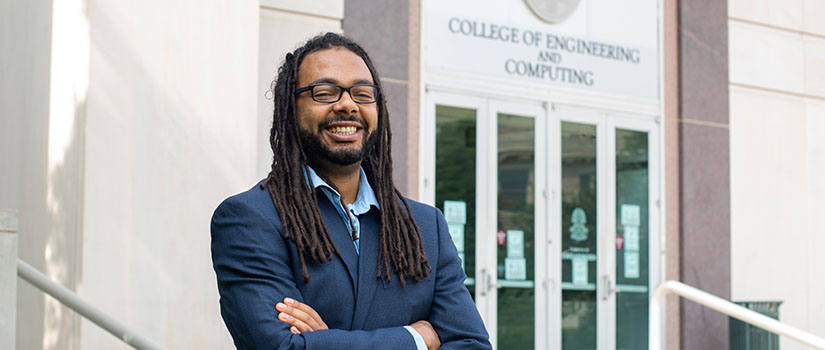Peripheral Arterial Disease (PAD) is the narrowing or blockage of the vessels that carry blood from the heart to the legs. It is primarily caused by a buildup of fatty plaque in the arteries, and according to the Centers for Disease Control, approximately 6.5 million people aged 40 and older in the United States have PAD.
As artificial intelligence (AI) and machine learning continue to transform patient care, Computer Science and Engineering Assistant Professor Forest Agostinelli is currently pursuing research on predicting outcomes for PAD patients.
PAD is a growing concern among aging populations and usually caused by a blockage where arteries in the legs are calcified, which is the build-up of calcium-containing plaque in the artery. The risk of developing PAD is increased by smoking, an unhealthy diet, diabetes and high blood pressure.
Agostinelli’s research aims to develop and train an automated calcification detection system by applying neural networks to computed tomographic angiography images (CTA). The CTA image combines a CT scan with a special dye to produce pictures of blood vessels or tissues. The combination of neural networks and CTAs would create an objective score for the calcification of PAD, which would reflect the calcium density and total area of calcium deposits. The score would be combined with biomarkers, which are molecules in the blood that can indicate abnormal processes.
“We want to create something similar to an Agatston score, which is used for coronary artery calcification to finalize this score. In combination with the biomarkers, it will not just create a score but also determine which arteries have the most calcification and an explainable prognosis,” Agostinelli says.
Agostinelli is collaborating with co-principal investigators Homayoun Valafar, professor and chair of Department of Computer Science and Engineering, and Professor Susan Lessner from the School of Medicine Columbia.
“It’s hard to predict how someone will recover after intervention or surgery. They can be doing great, but then their health could decline,” Agostinelli says. “But I think machine learning will do well, especially in explaining observations in terms that a practitioner can understand. It could be related to biomarkers, blood work or medical history.”
Agostinelli believes explainable AI can be applied to this research. With explainable AI, a set of processes or methods allow human users to comprehend the results created by machine learning algorithms. This has previously been used in solving Rubik’s Cube and mathematical problems.
“We not only want to solve problems using AI but explain how it's solved. A practitioner will probably have their own knowledge and intuition that they want to convey to the machine learning system, and we want to allow that communication to happen,” Agostinelli says.
Lessner was one of the first researchers to collaborate with Prisma Health on PAD. But no objective score is provided after scans are performed on patients to view their arteries. As a result, practitioners must rely on their own experiences with the best estimate of the amount of calcification. According to Lessner, one of the challenges to measuring calcification in the legs is the similarity between calcium and bone, which both appear white on a CT scan. This is unlike the heart, which has no bones, while the arteries display as different shades of gray.
“We collaborated first with Dr. Valafar and then Dr. Agostinelli because we had this challenging image analysis problem of looking at CT scans and trying to pick out and measure the calcified areas in blood vessels. It becomes a problem of image analysis trying to look at these CT scan images and find and measure what is the amount of calcium,” Lessner says. “But computer science researchers have tools to handle these complicated image analysis problems more easily. Using some of these high-end machine learning approaches to attack medical imaging and diagnostic problems is starting to take off.”
Agostinelli is looking forward to working and receiving feedback from a practitioner since he often only works with data sets with no interaction. He also believes that a successful outcome of the project would be to determine if there is a plausible explanation for PAD prognosis that could be further investigated with more research in the arterial disease field.
“For example, if a prognosis is related to a biomarker, a researcher can investigate the relationship further,” Agostinelli says. “It would be something that's testable in a real-world setting that could lead to actual discoveries in the field.”
